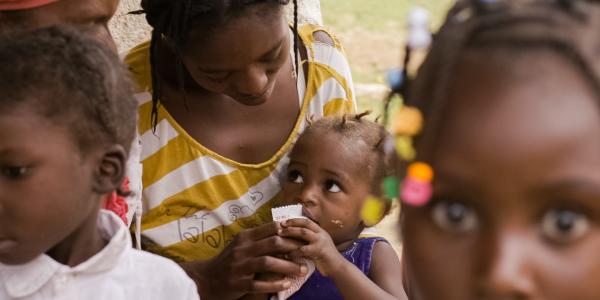
Outfitted viciousness has heightened the quantity of youngsters in Haiti experiencing serious intense lack of healthy sustenance (SAM), otherwise called extreme squandering, which has soar in the country by 30% contrasted with 2022, UNICEF has cautioned today.
A public nourishment Normalized Observing and Evaluation of Help and Changes (Shrewd) study led for this present year uncovers that kid unhealthiness is on the ascent in the Caribbean Island, tormented by brutality, deteriorating food uncertainty and cholera. In 2023, an estimated 115,600 children will have severe wasting, up from 87,500 the year before.
In several communes of the Metropolitan area of the Haitian capital Port au Prince, which has been plagued by armed violence for more than two years, one in five children currently suffer from some form of malnutrition. In the capital, children bear the brunt of the burden, with many communes showing extremely high or extremely high levels of severe wasting. The district in West Department that has been most affected by conflict has an acute malnutrition rate of 7,5%, which is two points higher than the national average.
“In Haiti, an ever increasing number of moms and fathers can never again give suitable consideration and sustenance to their youngsters, and guardians can’t take them to wellbeing focuses because of expanding horrendous brutality brought about by equipped gatherings,” said Bruno Maes, UNICEF Agent in Haiti, “Joined with the continuous cholera flare-up, more kids are experiencing extreme squandering all the more quickly, and will bite the dust in the event that earnest measures are not taken.”
The violence in Haiti is getting worse at an alarming rate. In excess of 600 individuals were killed in the period of April alone across Port-au-Ruler, as per the UN Coordinated Office in Haiti (BINUH). Children have had less access to safe drinking water, sanitation, and hygiene (WASH) due to the conflict brought on by armed groups. Combined with demolishing food uncertainty and common distress, the emergency has prompted a broad crumbling of the sustenance emergency the nation over.
The ongoing cholera outbreak has been devastating for children with severe wasting, adding to the malnutrition crisis. In Haiti, more than 41,000 suspected cases of cholera have been reported, with 46% of those cases affecting children under the age of 14. Due to critical human resource shortages and a lack of supplies, the national health system is unable to address the disease’s spread through violent neighborhoods and the associated malnutrition.
Almost one of every four youngsters in Haiti additionally experience the ill effects of ongoing lack of healthy sustenance, known as hindering, which has dependable actual outcomes. Because of chronic weakness and unhealthiness, hindered youngsters neglect to arrive at their physical and mental abilities.
Without nourishment and youngster endurance mediations earnestly increased to diminish bleakness and mortality related with serious squandering, as well as forestalling new hunger cases, the circumstance could additionally decay among now and October 2023.
In the early stages of the response, UNICEF needs $17 million urgently to increase the scale of early child wasting detection, acquire an additional 84,000 cartons of Ready-to-Use Therapeutic Foods (RUTF), and provide a comprehensive package of nutrition, health, WASH, early childhood development (ECD), and child protection interventions to improve the situation for children in Haiti. Over 100,000 children’s lives could be at risk if funding is not forthcoming.
Humanitarian requirements are still high in Haiti, where armed violence has forced women and children to flee their homes, and funding is decreasing.
In 2023, UNICEF will give life-saving labor and products to kids and weak populaces with regards to frailty, wellbeing and social and financial emergencies in Haiti, gave that adequate and ideal subsidizing of US$210.3 million mentioned is gotten. Only 15% of the funding has been allocated thus far.
